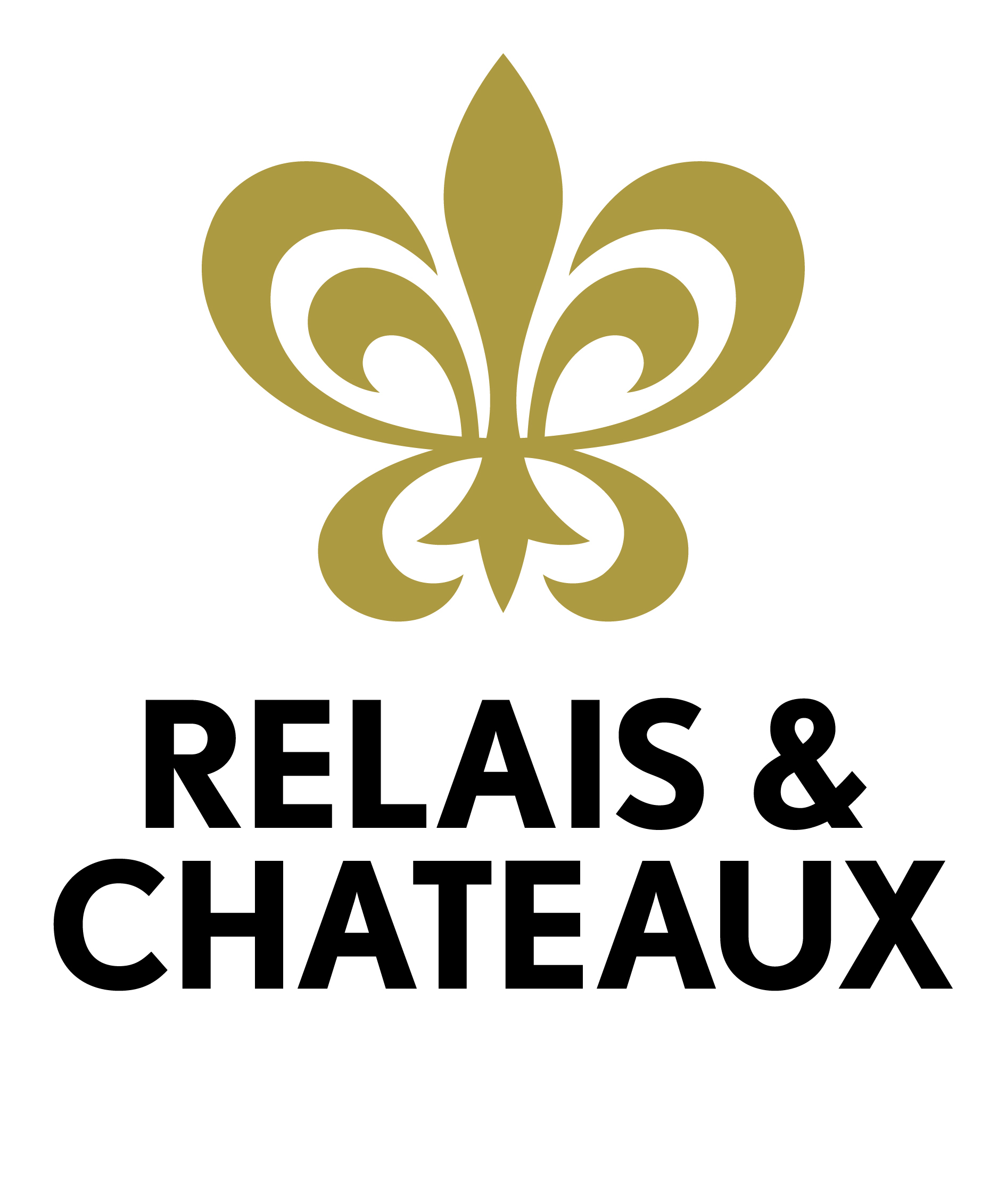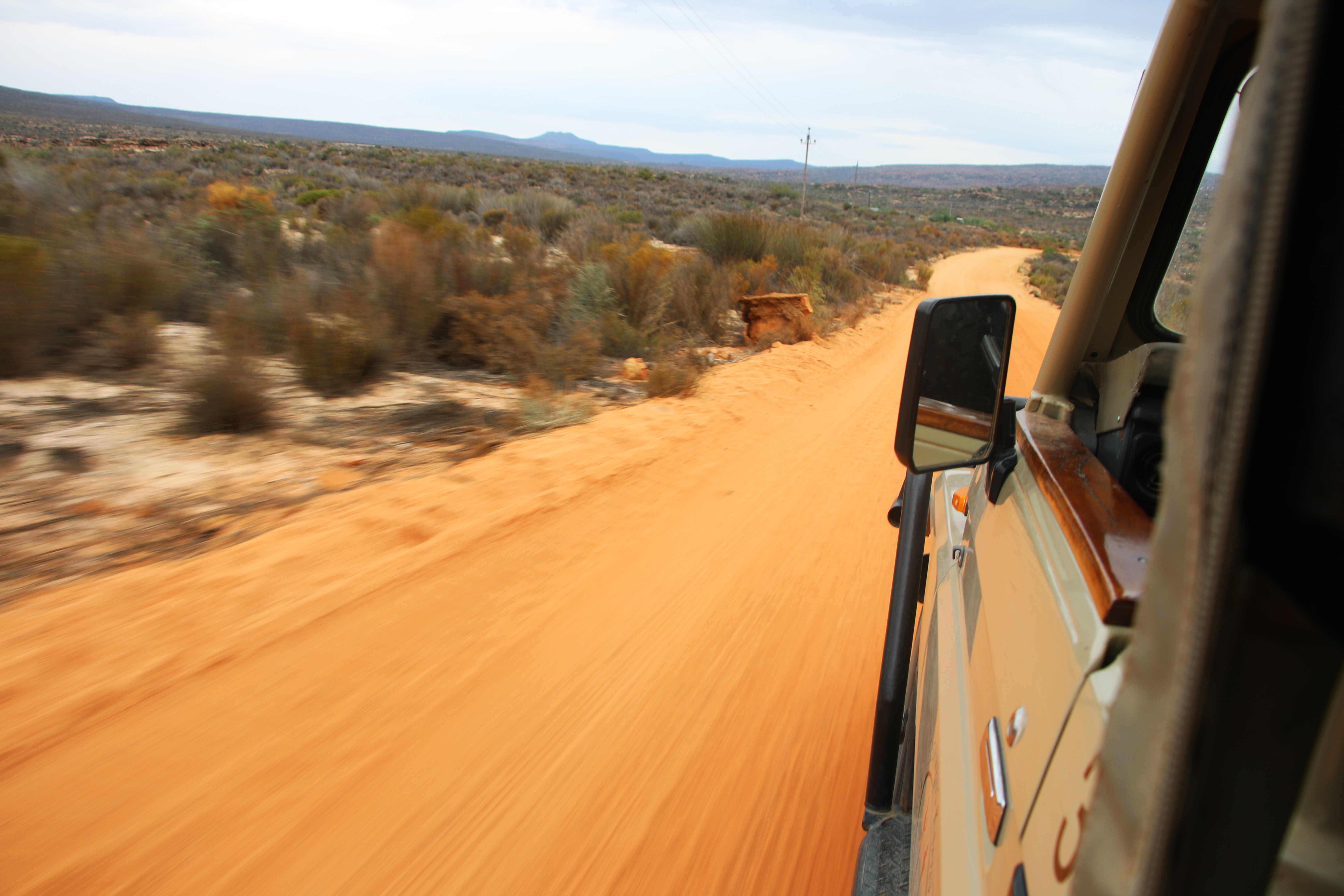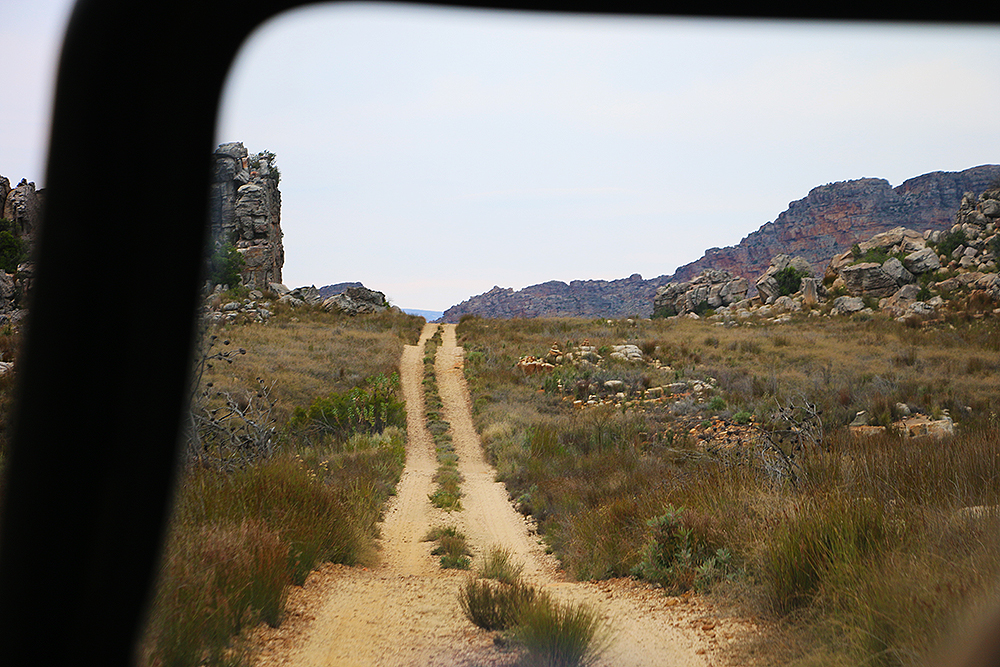
The mountain stretched out its path before us.
“Follow me,” the winding red clay road said. Small rocks, like unruly tortoises, scattered the trail.
With each roll of the tyres, down the declines, along the flats, up the climbs, I saw the drop beside us grow.
We were headed up into the mountain but it’s never really as simple as that. When it comes to climbing mountains, when it comes to getting to the top most peaks of the Cederberg, one must go down too. Up and down, up and down.

I watched the cliff, the sun and the clouds, the ups and the downs, the tyres on the left of the vehicle – Bushmans Kloof’s game vehicle – like an eagle getting the lay of the land.
We weren’t here to see animals, we were on our way to plant the endangered and endemic Clanwilliam cedar tree (Widdringtonia cedarbergensis) in the mountains named after them. The Cederberg. But there is something about a game vehicle – an open sided 4×4 and the fresh African air – that makes your eyes perk up for the slightest hint of movement in the distance. These are the animal eyes of the safarigoer.
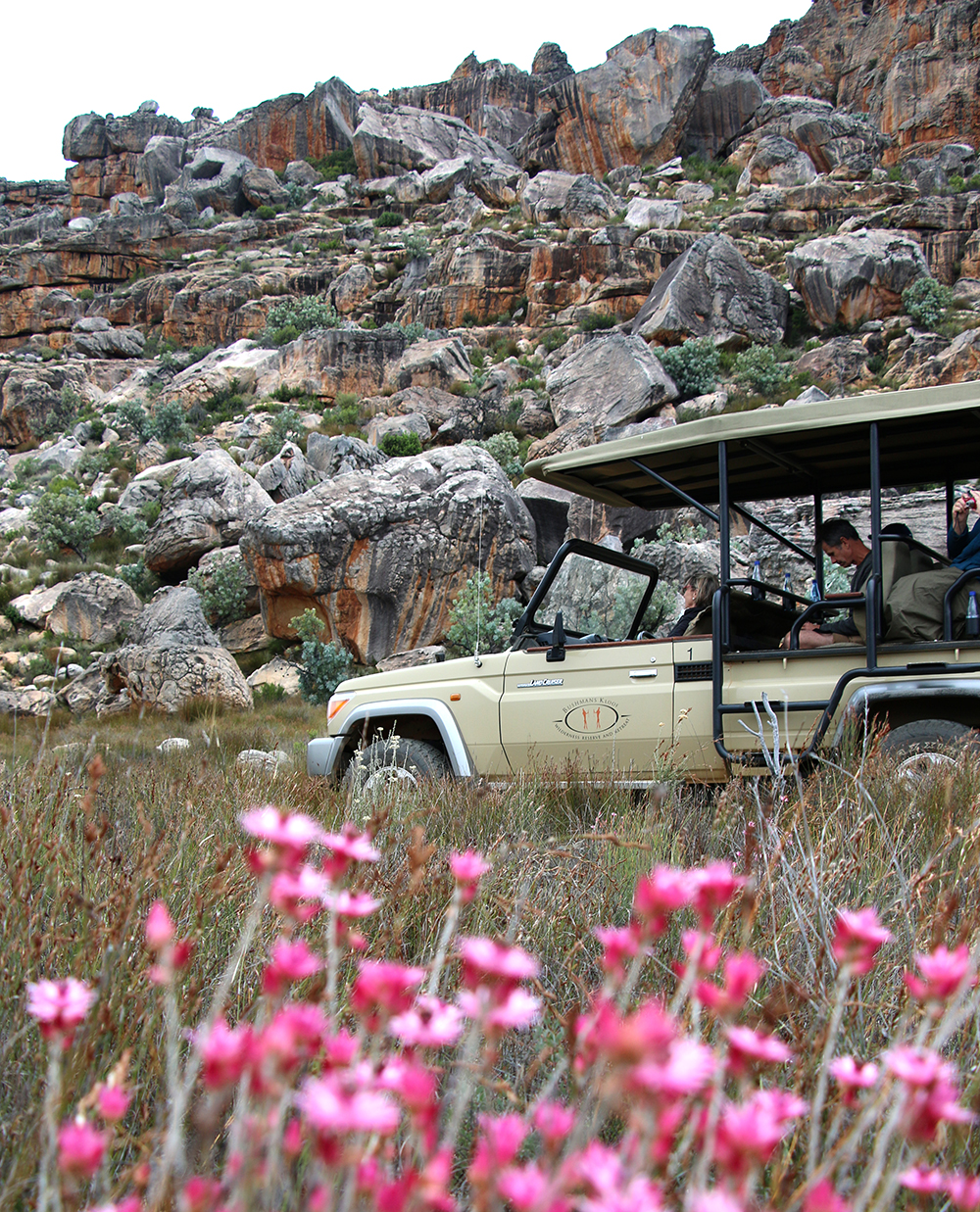
After the bontebok, klipspringer, red hartebeest, grey rhebok and zebra, the aardwolf, African wildcat and bat-eared fox of Bushmans Kloof Wilderness Reserve & Wellness Retreat, these mountains, a short drive from the lodge, pointed us to rock rabbits, baboons, tortoises, the great African Fish eagle and Black Harrier.
Arms would stretch out of the vehicle in slow motion as passengers pointed to their sightings, uncertain if it had been real, or a figment of safari imagination, of mountain elevation.
Because out in the middle of the Cederberg away from any view of city streets or lights, any sound of man, it seems unbelievable that anyone or thing could live here.

When you look closely (when you are accompanied by someone from Cape Nature, like Conservation Manager, Rika du Plessis) you realise how inaccurate it would be to describe the region as barren. Remote yes, isolated yes. But not barren. Life has adapted to the terrain here in many different forms. Dung beetles, snakes, scorpions live side by side with the odd village donkey and the Cape Floral Kingdom.
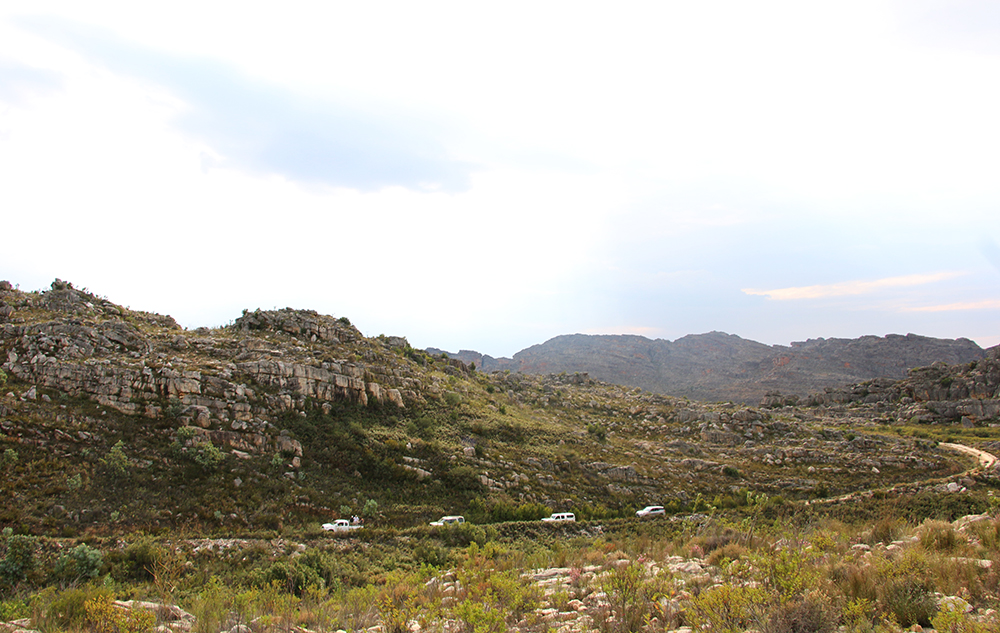
The reason for the scarcity of cedar trees has more to do with the influence of the human hand than nature. Deforestation has ripped these icons of the area from the picture. Wild fires have not helped, nor the fact that cedars like to take their time. They’re slow growers, these trees.
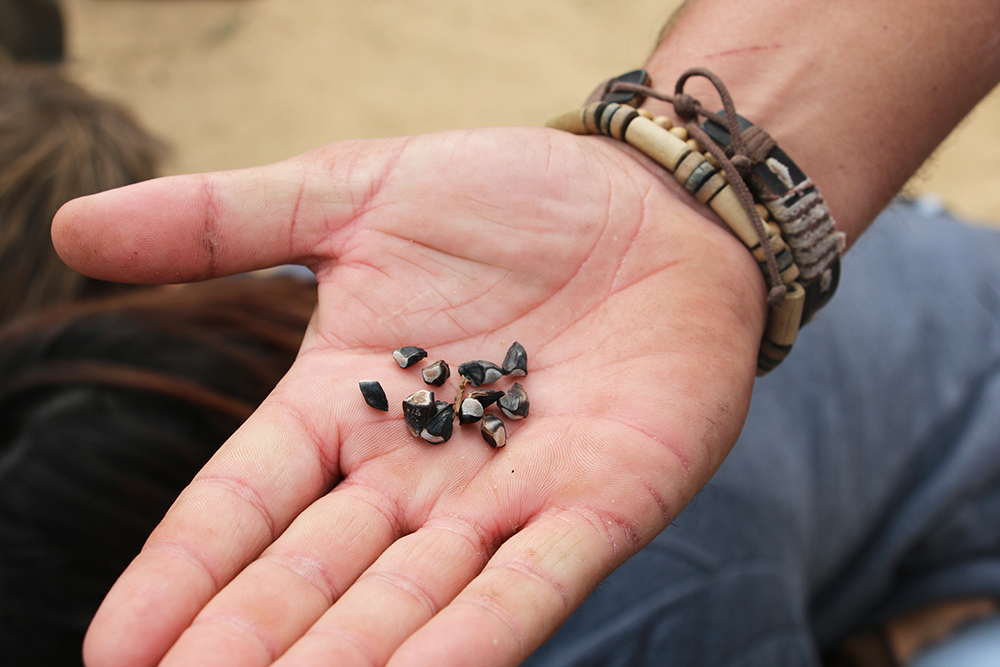
To attempt to counteract this, Cape Nature and Bushmans Kloof host this annual Clanwilliam Cedar Tree event at Heuningvlei in the Cederberg Wilderness each year.
About 300 conservation volunteers, school children and families from all over the Western Cape unite to plant cedar saplings. To rewild the area. Participants include the Wildflower Society, the local branch of the Botanical Society and the Cederberg Conservancy, as well as local schools.
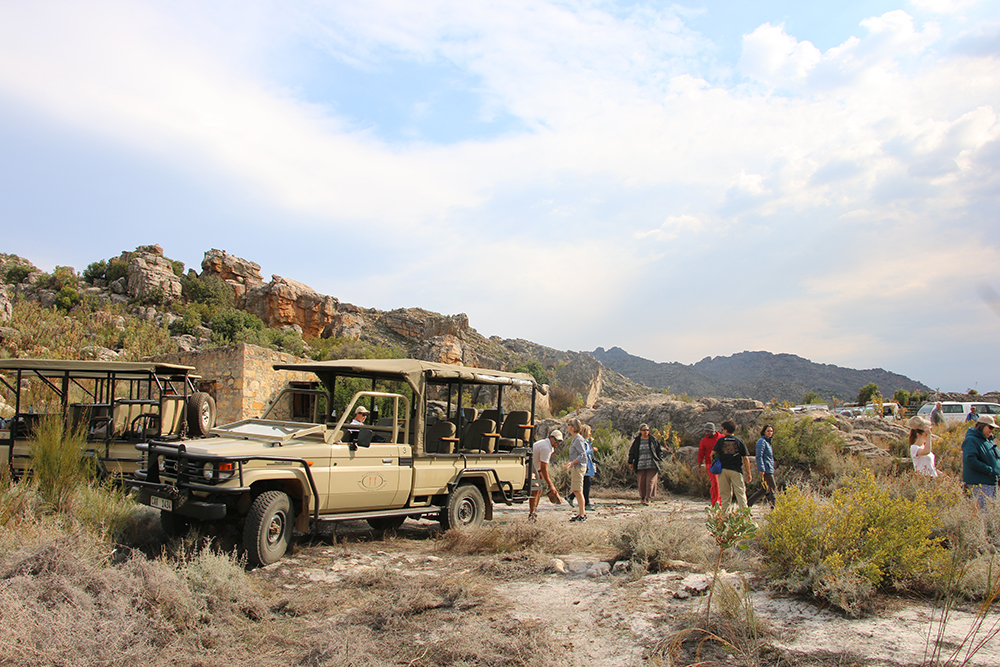
At a clearing high up in the hills, our vehicle parked, alongside the other treeplanters and guests. Our trees were waiting for us – mature seedlings a hand tall that had been birthed and cared for in Cape Nature’s nursery.
Our feet took to the ground and we made our individual paths into the grove and the surrounding wilderness. Burnt skeletons of cedars past stood tall trying to hold onto the shifting sand beneath them. A few trees remained, signalling us with their bright Christmas tree green amid the browns and blacks.
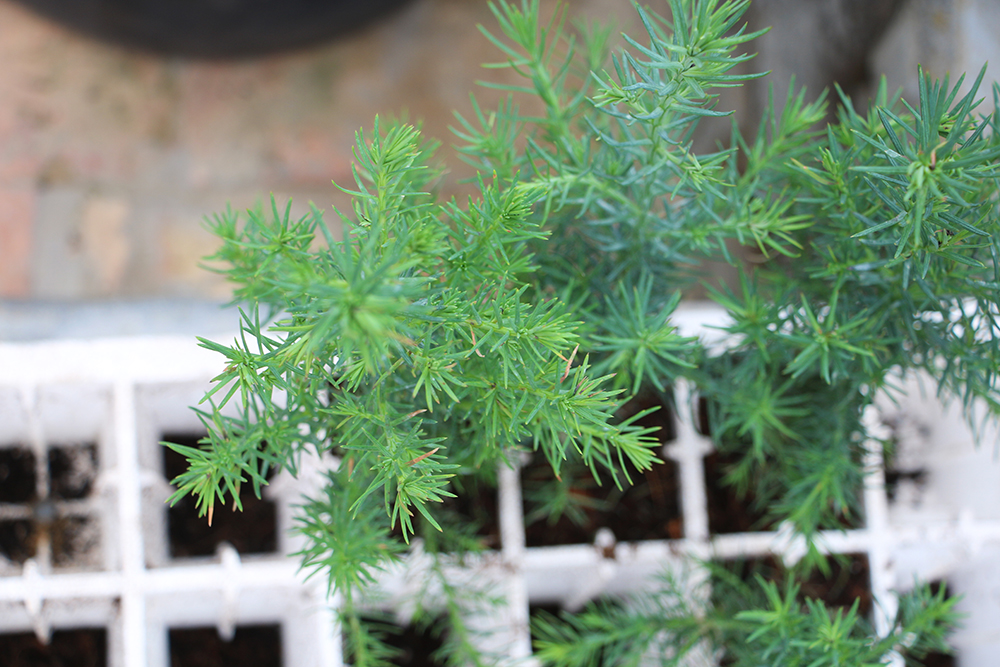

Beside a stump for company, I dug my hole and planted my sapling. I covered her up with the sandy soil around her and sprinkled cold water over her.
And as though watching, attentively, to what our gathering was up to… as though hearing our soft words of encouragement and wishes to the plant gods, the sun slipped behind the clouds and rain erupted over us.
Over the dry earth. Over the donkeys and eagles and snakes. Over our young trees.
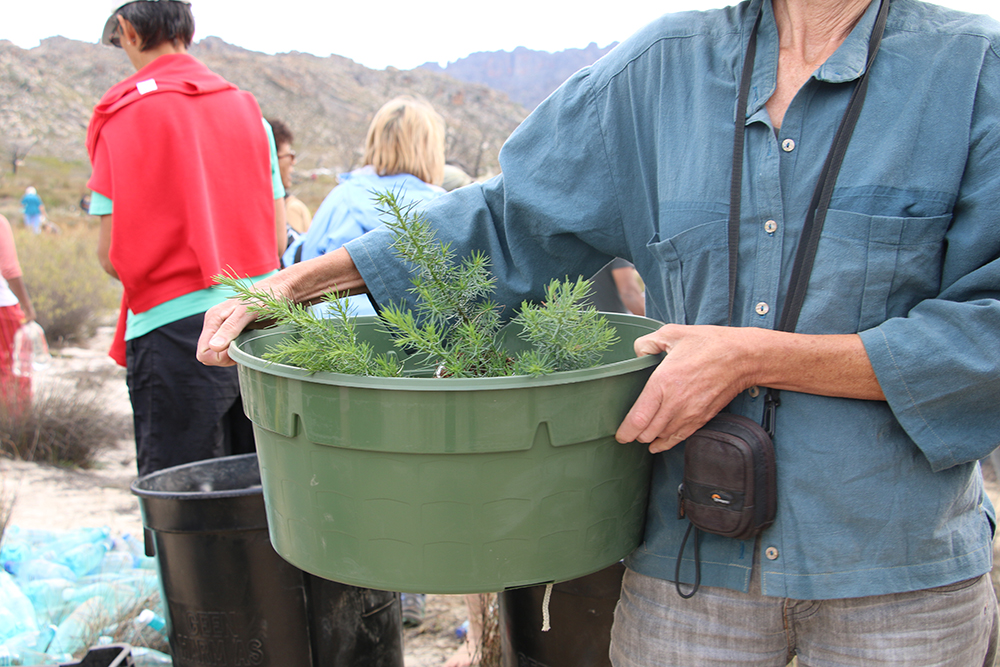
It’s difficult not to be a little mystically minded at moments like this.
The area, the whole of the Cape, had been in the midst of the worst drought in 100 years. Rain was not common. And yet here we stood, drenched by what felt a whole lot like the earth trying its best to help us grow some trees.
It was all up to Mother Nature now.

We climbed back into the game vehicle and rolled back down (up and down, up and down) the mountain to the lodge, to our bontebok, to flooding gardens and puddled dirt roads and a great hopes to return in a year to see our handsome cedars still standing, tall and green.
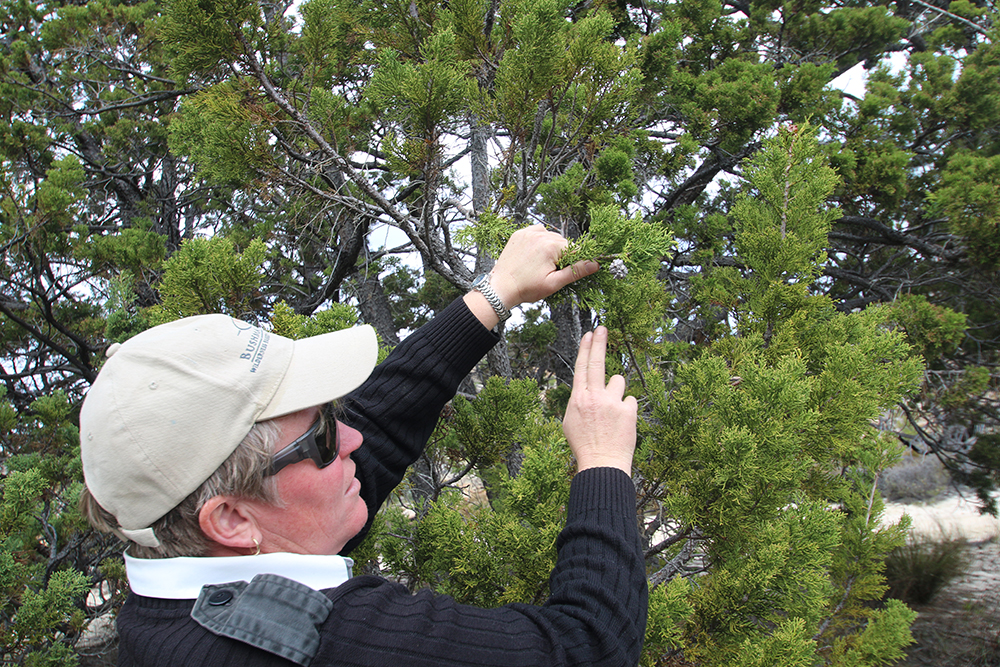
“Until you dig a hole, you plant a tree, you water it and make it survive, you haven’t done a thing. You are just talking.” — Wangari Maathai
Highlights of the Event
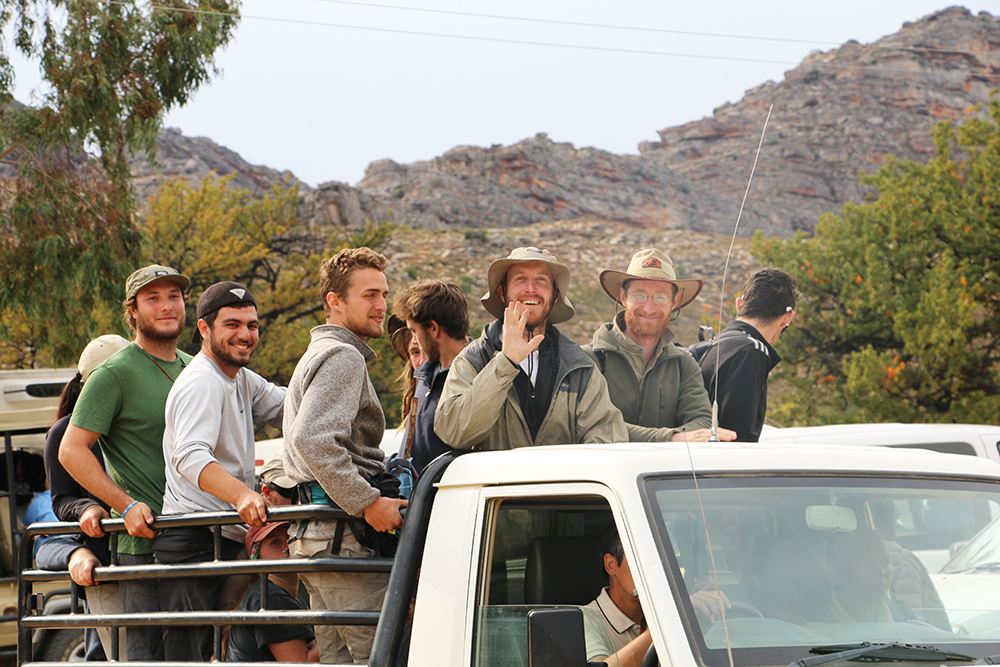
Everyone, strangers, friends, locals, travellers, coming together.

Even little ones… who were given cedar seeds to plant, to grow into saplings for next year’s tree planting event
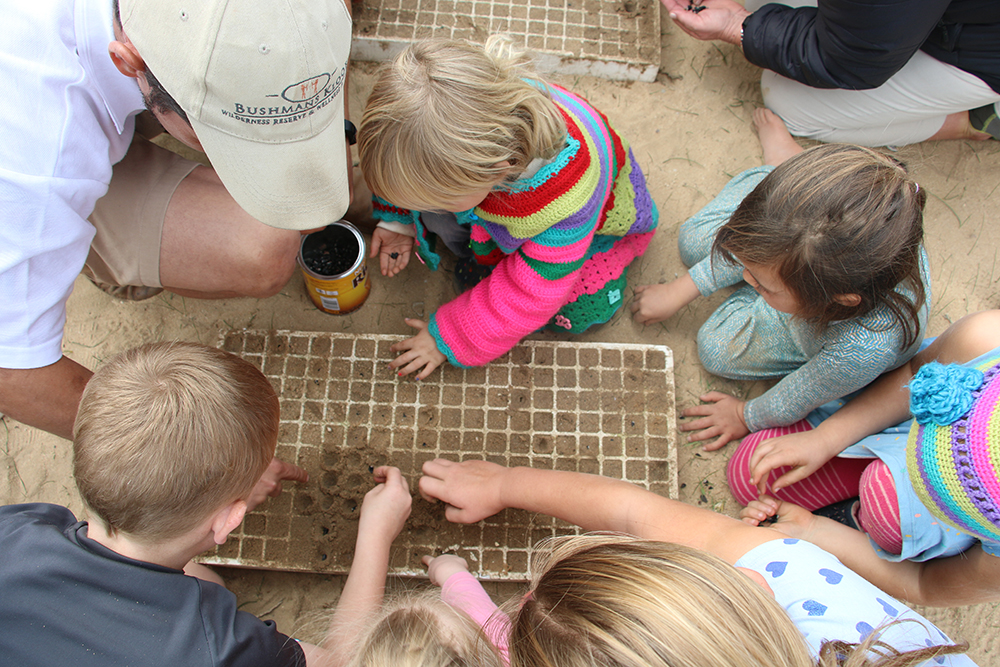
“It’s the little things citizens do. That’s what will make the difference. My little thing is planting trees.” — Wangari Maathai

Searching for animal life in the peaks and valleys
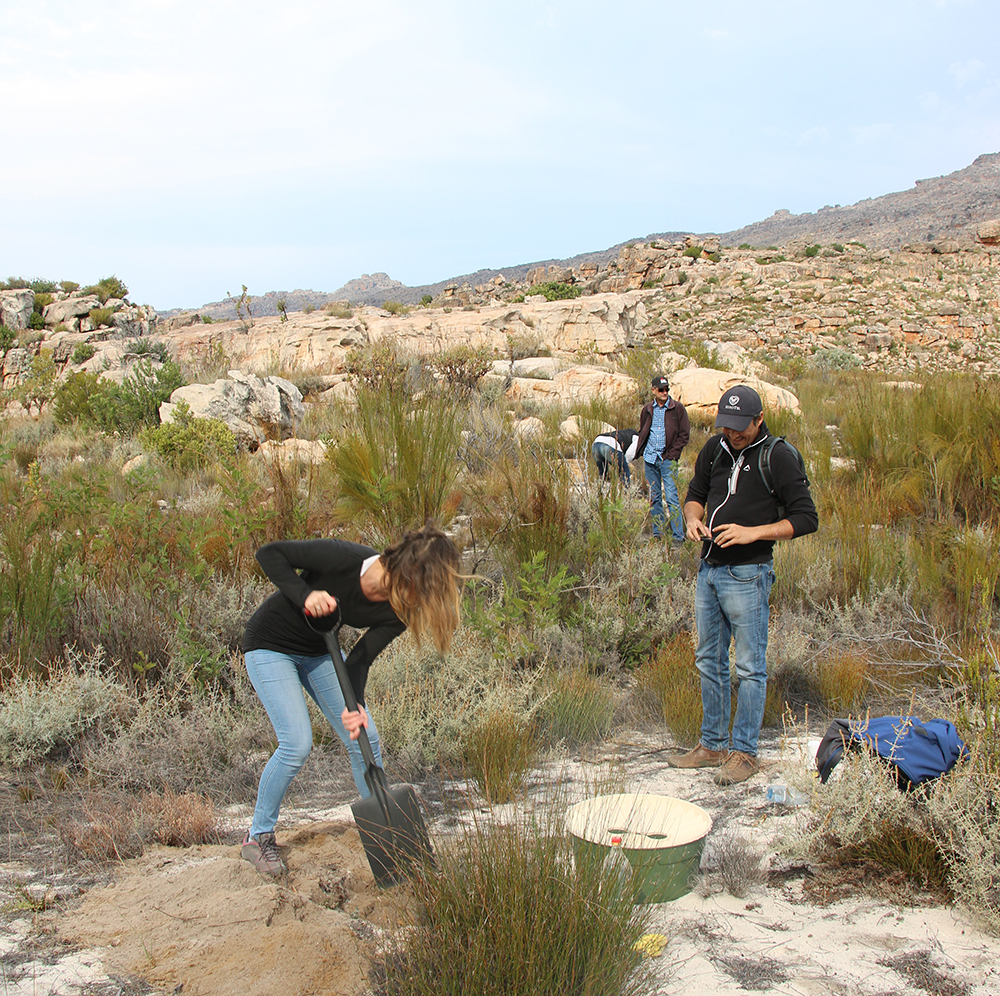
Planting – for some of us – our first ever tree

The beauty of the Cederberg and its rich, unique life
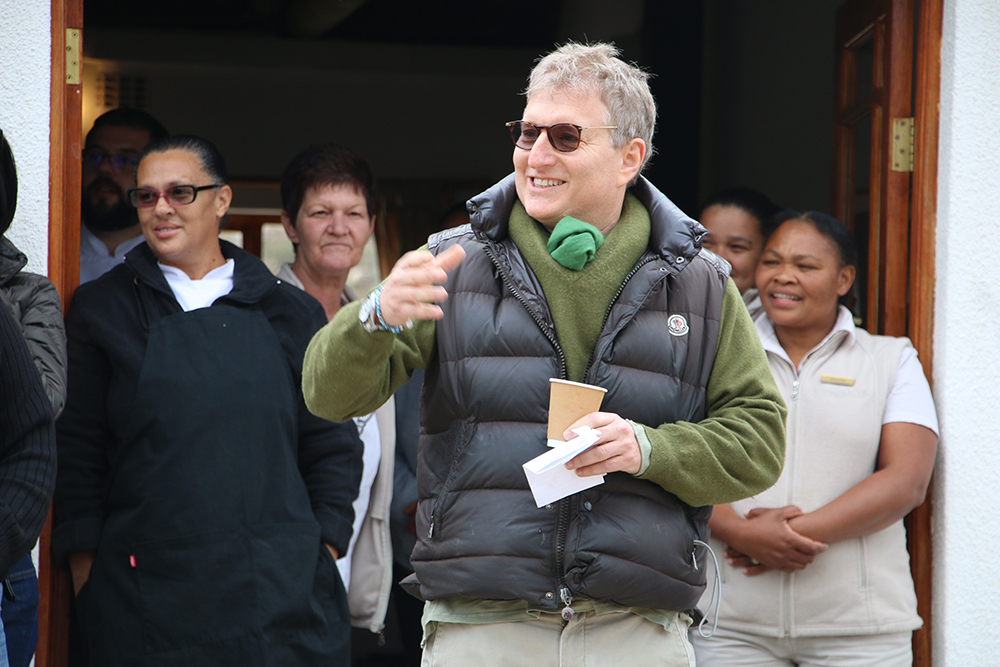
The inspiring introduction from one of Bushmans Kloof’s Chairmen, Michael Tollman, about the sustainability projects at Bushmans Kloof and the importance of the cedar tree event. Watch the talk here >

The song and dance that concluded the event in the mountains… compliments of the local band and Reil dance troupe

And the lunch and sweet treats in between, from Bushmans Kloof Executive Chef, Charles Hayward


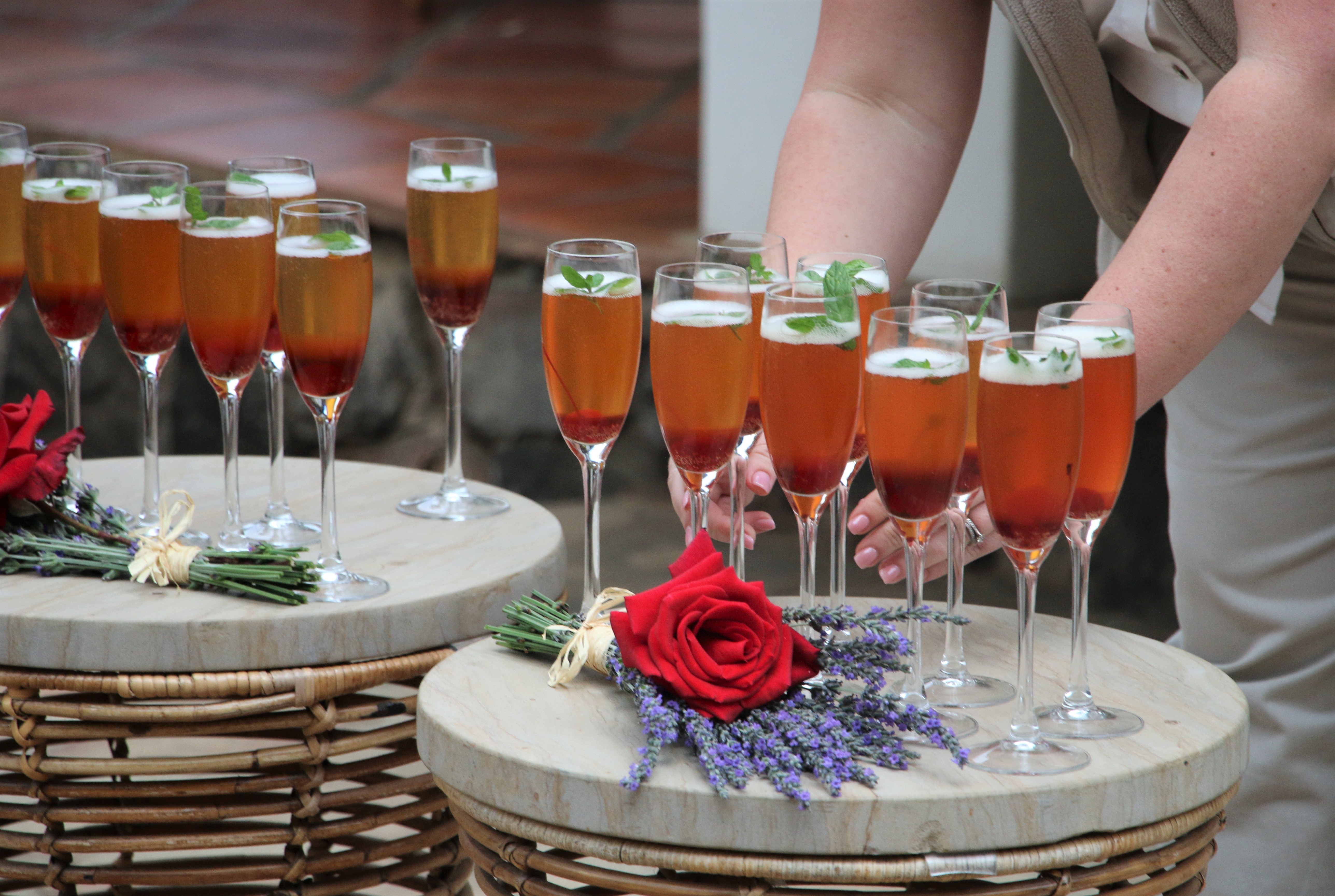
Returning to Bushmans Kloof for the night… A beautiful, welcome highlight without a doubt.
Read more: Good Hope FM breakfast host Dan Corder gets to know CapeNature and watch the video.
